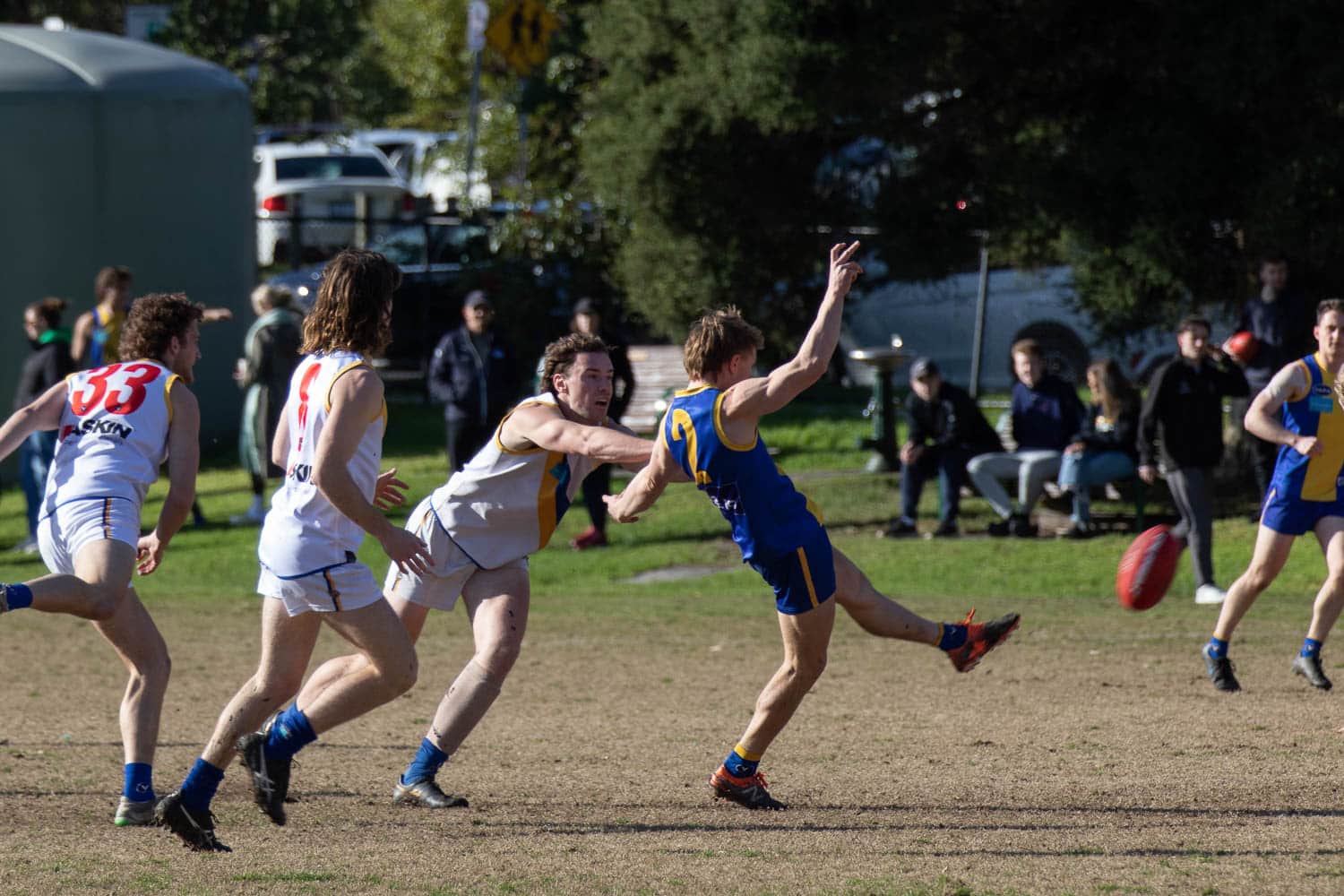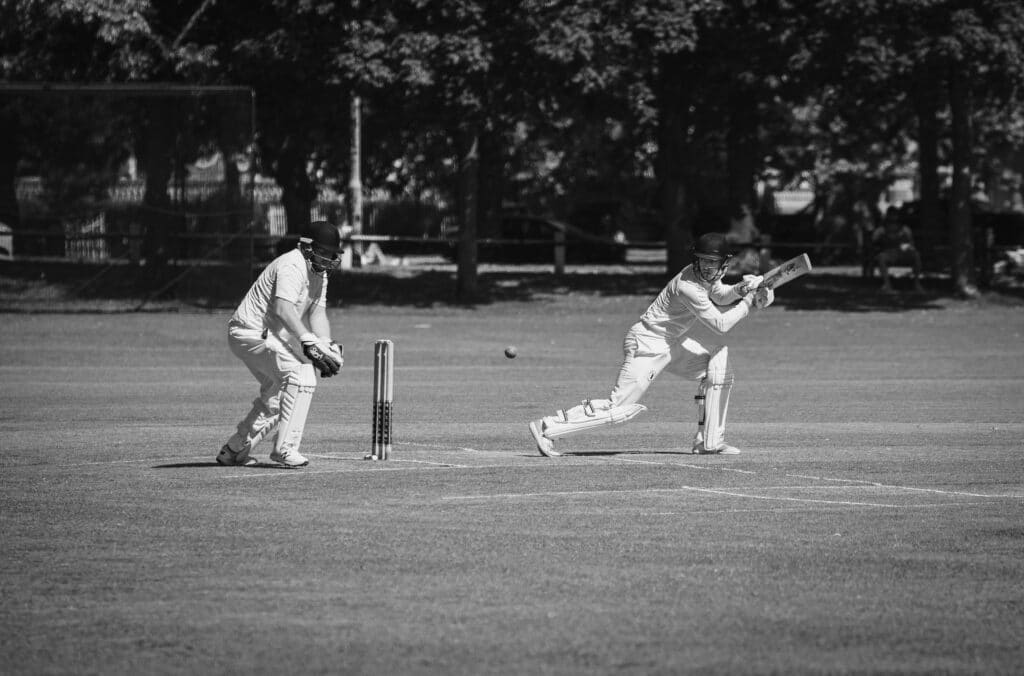How long does it take a hamstring to recover?
What we’ll cover
How long does it take a hamstring to recover?
This year at Malvern East Physiotherapy we’ve had the exciting opportunity to look after one of the largest amateur football clubs in the local area; De La Salle Amateur Football Club. Our physiotherapist Michael Scardamaglia is currently the club’s Head physiotherapist and Head of Medical Services. With the mid-season VAFA break, Michael has written a blog reflecting on the season so far.
It has been a great year of learning and growth, which has involved countless hours of reading journal articles to scrub up on the latest return to play research. A particular area of interest for me has been reading up on hamstring injuries!
Hamstring injuries account for the most time lost on average among athletes participating in running based sports with an average 14% rate of new hamstring injuries per club per season. Moreover, more than one third of these hamstring injuries will suffer a recurrence within the first 12 months, most of those recurrences occurring in the first 2 weeks of returning to sport. Interestingly, at the elite level in the AFL, the estimated cost to clubs could be upward of $245,000 per season; a significant chunk that I’m sure these clubs would prefer to save rather than spend.
Key highlight
- Hamstring injuries vary in severity and recovery time, depending on tear location, loss of function, injury mechanism, and prior history, with minor strains healing in 2–3 weeks and severe cases taking up to 16 weeks.
- Key factors influencing recovery include age, prior injuries, proper early treatment (RICE), and rehab consistency, with tears near the sitting bone typically requiring longer healing time.
- Rehabilitation is broken into four progressive stages, focusing on pain reduction, mobility, strength, and sport-specific function, emphasising the importance of physiotherapy and a gradual return to activity.
What Is a Hamstring Injury?
Your hamstrings are a group of three muscles running along the back of your thigh, from your pelvis to below your knee. These powerhouse muscles help you bend your knee and extend your hip, essentially, they’re crucial for walking, running, jumping, and even just standing up from your office chair.
A hamstring injury occurs when one or more of these muscles stretch too far or tear. Most commonly, this happens during activities that involve sudden stopping and starting or rapid changes in direction. Think about chasing after your kids at the park, playing weekend sports, or even rushing to catch the tram in Melbourne’s CBD.
How long does it take a hamstring to recover?
That is a question with so many variables at play that it is difficult to put a blanket timeline on it, but there are some rough guidelines as to when we should expect to be back out there. Firstly, we must consider the location of the tear within the hamstring. The hamstring is more of a ‘complex’ than a
muscle alone. It consists of 3 muscles, with tendons that extend deep within the muscle belly to about two thirds of the way down the thigh. Tears within the middle of the muscle belly will generally be less severe, whereas tears in the central tendon will mean a much longer return to sport timeframe.
Secondly, the loss of function post injury will play a significant role in how long it takes to recover. Some hamstring injuries, although painful at the time, will settle enough that you can start some very light pain free running within 2–3 days of injury, whereas some other people will find it very difficult to tolerate that. Thirdly, the injury mechanism; how did you injure it? Followed lastly by, the loss of flexibility post injury. I think it is also worth noting that a history of hamstring injury will also play a key role both physically and psychologically. It has been postulated that a perceived high severity of injury can lead to longer return to play times even when all the other factors assessed (that we just listed
above) are rather minor.
In summary, minor hamstring injuries can see you return to play in as little as 2–3 weeks, but at the loss of function increases, that can balloon out to 4–6 weeks, or in the most severe cases 12–16 weeks. My learning as a physiotherapist that has to manage a lot of these injuries across a football season with 5–6 teams at a club is that we need to keep doing lots of sprint work, hamstring strengthening and placing an emphasis on recovery to make sure we better manage these injuries as a community to limit the time lost playing.
Factors That Affect Hamstring Recovery Time
Just like every small business has unique challenges, every hamstring injury has its own recovery journey. Several factors can influence how quickly you bounce back:
- Age: Unfortunately, healing typically takes longer as we age
- Prior injuries: Previous hamstring tears increase recovery time for new injuries
- Initial treatment: Proper RICE (Rest, Ice, Compression, Elevation) protocol in the first 48-72 hours can significantly speed recovery
- Rehabilitation consistency: Skipping physio appointments or exercises extends recovery time
- Injury location: Tears closer to the sitting bone (ischial tuberosity) generally take longer to heal
- Overall health: General fitness, nutrition, and sleep quality affect tissue repair
- Returning too soon: Attempting full activity before complete healing risks re-injury
“The most common mistake I see,” notes Melbourne physiotherapist James Wilson, “is business owners returning to full activity too soon because they feel they can’t afford the downtime. This almost always leads to re-injury and ultimately costs them more time in recovery.”
Stages of Hamstring Rehabilitation
| Rehab Stage | Goals | Sample Activities |
| Acute (1-7 days) | Reduce pain & inflammation | Ice, compression, rest, and gentle range of motion exercises |
| Sub-acute (1-3 weeks) | Regain mobility and begin light loading | Gentle stretching, isometric exercises, walking |
| Strengthening (2-6 weeks) | Build strength & control | Resistance bands, bodyweight exercises, eccentric loading |
| Functional (4-12 weeks) | Return to activity/sports | Sport-specific drills, progressive running program, agility training |
If you are experiencing a hamstring injury or strain, be sure to book online or call our friendly team.



